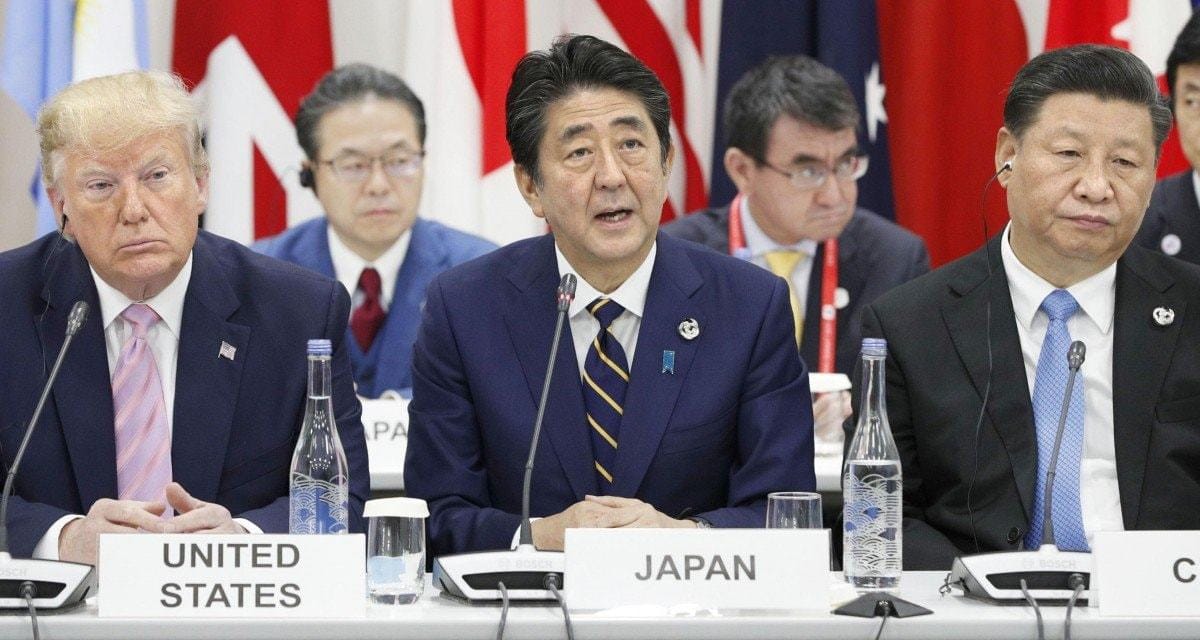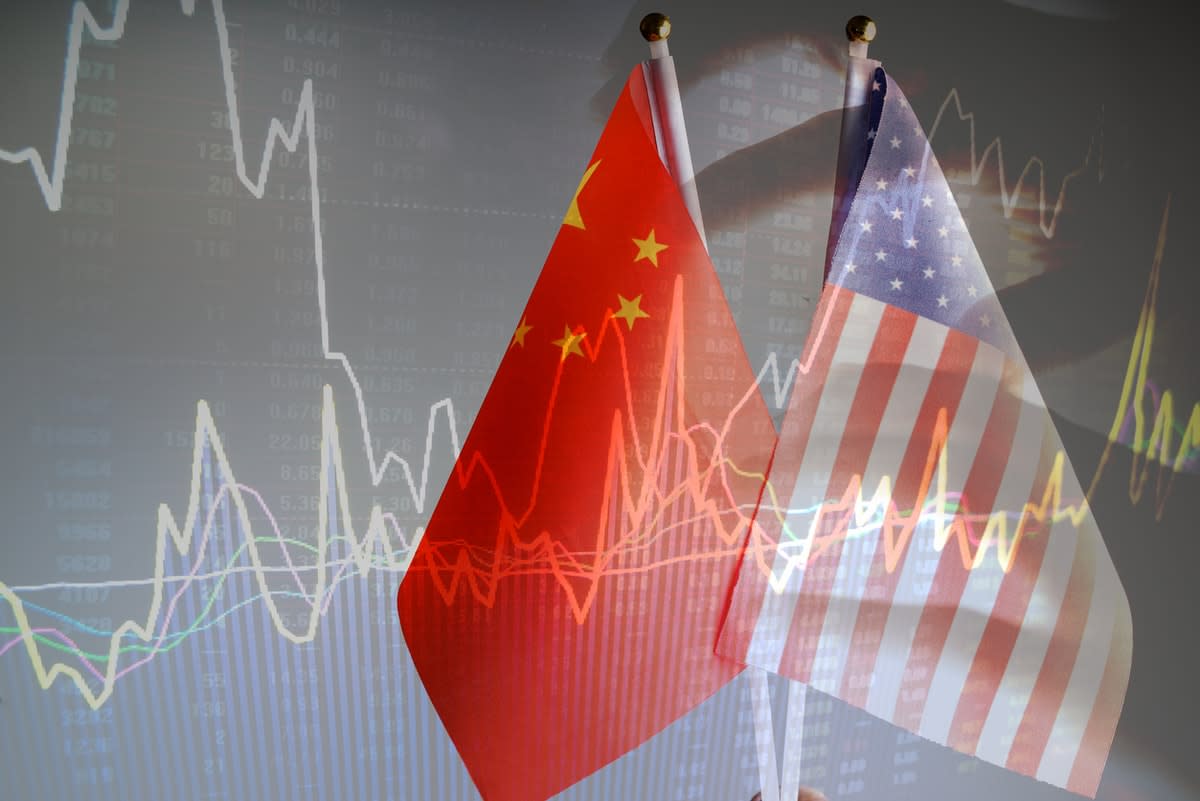
Following the underwhelming outcomes of the G20 Summit, there’s a growing sense of urgency for Australia to spell out a new trade strategy. Canberra needs to gauge the consequences of reversing the US trade deficit on the international economic order, and how to adjust to the US foreign policy curbs on China’s incursions in the Australian sphere of influence.
Ultimately, it’s a matter of asking: How is Australia going to cope with the limited agency it has on the emerging international trade system?
Monitoring trends in the US trade balance is key to cast light on the path ahead for Australia. Under Donald Trump, the United States’ trade deficit has grown to a 10-year high. Current US census data shows that the total deficit in goods and services reached $627 billion in 2018 (and growing in 2019), the highest level since 2008.
Trump has made reducing the trade deficit, especially of goods with China, a major goal of his administration. However, current reports show a record-breaking $419 billion trade gap in 2018 for the US in goods, not much slowing in 2019 despite the tariffs imposed on Chinese products.
The easy explanation for the deficit is that Trump’s economic policy isn’t working as intended, although it may be too soon to say. The growing deficit may be mostly due to increased public spending and lower taxes combined with expedient trade transactions rushed to avoid newly imposed tariffs.
The emerging economic order
Trump’s trade doctrine is on course to reshuffle the foundations of the international economic order. In the American context, countering the trade deficit may bring short-term relief to the industrial system. At the international monetary level, however, it can create havoc.
It’s the US response to the trade deficit rather than the growing deficit itself that exposes the fault lines of the American global hegemony in the 21st century. As a matter of fact, it’s precisely the massive account deficit that pumps US dollars into the global financial system.
Strangling this monetary flow with policies that encourage exports while discouraging imports puts at risk the role of the US dollar as the chief international trading instrument. This could strengthen the resolve of non-US-aligned trade powerhouses to build shadow reserve portfolios with other currencies.
It won’t be long until these unorthodox accounts can gradually emerge in the open capital markets, luring minnow countries with lower financial costs and more widespread trading availability.
Consequences of reversing US trade deficit
In the short term, a US trade surplus would quickly repatriate dollars, and thus make them scarce and over-valued in the global markets. This is due to the fact that countries that currently enjoy significant trade surpluses with the US would have an incentive to depreciate their currencies to offset most of their export losses. The manufacturing countries would then cover the remaining export shortfall by pushing up prices, thus triggering a global credit crunch.
In the medium term, this situation will make the US dollars not only scarce in the global markets, but also too expensive to buy for trading and investment purposes. Hence, over the long term, reversing the US trade deficit would undermine the US monetary hegemony, the true pillar of American influence over the world.

Rise of China
In historical terms, Trump’s election as US president in 2016 set in motion a further departure from the liberal economic order created in the post-WWII period. Within the American bloc, this order thrived on the tacit exchange of security for market access. With the end of the Cold War and the emergence of China’s economic power, the strategic space of liberal democratic countries such as Australia is now in a critically evolutionary phase.
The geopolitical hierarchy is splitting between the US-led security order and the global trading system that’s challenged by China’s takeover. Naturally, this is generating a competition between the US and China, with the liberal middle powers such as Australia that strive to deal with China for economic gains without giving away the American security umbrella on one hand, and destabilising actors at their geographical and moral borders at the other – chiefly Russia, Islamic terrorism, and the various populist/nationalistic forces. Trump’s unilateralist foreign policy may put an abrupt end to this dynamic.
On the other hand, China may soon gradually use its trade and investment might to push weaker trading partners away from their strong bilateral security ties with the US in exchange for tighter economic cooperation.
US foreign policy
This also explains the change of geographical language in the US foreign policy, which now talks about the “Indo-Pacific” region instead of the previously used “Asia-Pacific.” In other words, this new language signals the strategic move from a notionally multipolar Asia-Pacific region to the US-led Indo-Pacific rim.
Trump’s strategy to contain China’s rise as a global superpower shows that the securitisation of Indo-Pacific maritime trade and investment is meant to offset the US geopolitical retreat from the Asian core inland.
China may soon gradually use its trade and investment might to push weaker trading partners away from their strong bilateral security ties with the US in exchange for tighter economic cooperation.
In particular, this explains why the US administration is ramping up pressure on India, Japan and Australia to establish a trade and security cordon around China’s geopolitical advancement in Asia. Weaponising trade is the key feature of the American “surround-and-enforce China” strategy, so to speak.
Trump’s surround-and-enforce move supersedes and somehow sublimates his predecessor Barack Obama’s hedge-and-engage approach, also known as “pivot to Asia”. To escape the perceived Thucydides Trap, the US is thus accelerating toward an Asian balance of power within a new bipolar order destined to open unsavoury scenarios for Australia.
Hard questions for Australia
This emerging condition requires a geopolitical paradigm shift under political, security and economic perspectives. The impact of a US-China dual hierarchy on the world order raises urgent questions. First and foremost: Does the economic liberal order ultimately depend on a single hegemon? Can the US remain a credible security provider for Australia even under conditions of geo-economic decline? How far will China seek to push Australia into loosening its security ties with the US as it grows more powerful? If forced to make a choice, will Australia side with its security patron or with its largest trade partner? Can China further develop in the global stage as a balancing force against populist and other destabilising actors?
To develop a coherent strategic outlook that secures stable ground for prosperity, Australia needs to resist the temptation to hide those questions in the too-hard basket.





